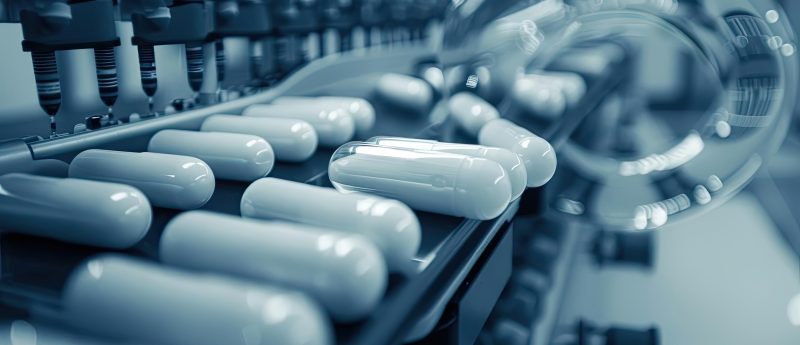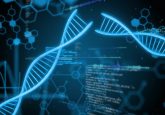Critical reagents in LBAs and hybrid LC–MS assays: an interview with Rasa Santockyte

We recently caught up with Rasa Santockyte (Bristol Myers Squibb, NJ, USA), author of the perspective article in Bioanalysis titled, ‘Critical reagent screening and characterization: benefits and approaches for protein biomarker assays by hybrid LC–MS.’ In the article, Rasa explored the approaches and benefits of characterizing and screening critical reagents, as well as ideas surrounding antibody conjugation and the bioanalytical considerations in hybrid LC–MS assay development.
Don’t miss out on exclusive access to Bioanalysis journal articles! Register now to become a member of Bioanalysis Zone for free.
Become a member
Rasa Santockyte,
Senior Research Investigator I, Bristol Myers Squibb
I am a Senior Research Investigator in the Clinical Biomarker Immunoassays & Mass Spec Group at Bristol Myers Squibb (BMS). I develop hybrid LC–MS assays that are used for biomarker analysis in pre-clinical and clinical studies. Before joining the Biomarker Group, I worked for the Reagent Center of Excellence, the group at BMS that is dedicated to the screening and characterization of critical reagents used in support of bioanalytical method development. I obtained my PhD degree from Georgetown University (Washington, DC, USA) and worked for a small start-up company before joining BMS.
Q What inspired your career in bioanalysis? Is there a particular reason for your focus on LBAs and hybrid LC–MS techniques?
Bioanalysts help other scientists to understand the complexity of biological systems and the dynamics of the endogenous and exogenous molecules in this intricate environment. We need to know ‘what’ and ‘how much’ has an effect or correlates with an effect on the system. In addition to measuring the analyte (‘what’), we need to understand the biological context and use the best technological approaches to adequately address the question to be answered. I enjoy working in the environment that is in the interface of several scientific disciplines. As a bench scientist, I keep my focus on the existing and the emerging technologies (‘the cool lab toys’); as a curious researcher I put every effort to understand the full picture on how my assay is helping to address the biological question. Bioanalysis is the field where I can use my diverse knowledge in chemistry, biology as well as drug discovery and development. As a chemist with a protein chemistry background I have experience in both immunoassay and LC–MS method development. I see my knowledge and skill set as a perfect fit for the rapidly evolving hybrid LC–MS field that has a great potential for a broader adoption in drug development and clinical applications.
Q Your Bioanalysis perspective article stated that the benefits of well-characterized hybrid LC–MS assay reagents are frequently underestimated. Do you think there was a particular reason for this? What inspired you to evaluate the benefits and approaches of critical reagent screening and characterization for protein biomarker assays by hybrid LC–MS?
Recombinant proteins and affinity capture reagents are critical to the overall hybrid LC–MS assay performance, and assay developers should not be wasting their time using unsuitable reagents. The major reason the importance of well-characterized reagents is underestimated in the hybrid LC–MS space is that these assays are developed by scientists with experience in LC–MS analysis of small molecules. Most small molecules are relatively simple and well-characterized by the reagent suppliers. This is not the case with protein reagents, which frequently lack biochemical and biophysical characterization data. In this publication, we detailed the reasons why protein reagent screening and characterization is critical for successful hybrid LC–MS assay development. The publication is meant to raise awareness that the selection of suitable protein reagents can shorten method development time and help us to develop better assays, even though the initial reagent screening and characterization is a time-consuming process.
Q Biomarker discovery and evaluation is a lengthy process and poor analyte definition has been identified as a bottleneck. Since your publication have there been any further developments in hybrid LC–MS techniques to address this bottleneck or any other challenges?
As described in our publication, endogenous analytes are not well-characterized making it difficult to confirm that the recombinant calibrator represents the endogenous protein well. In addition, many endogenous protein biomarkers are not just one species, but can exist as multiple proteoforms. Characterization of endogenous proteins is a time-consuming process, but it can help us to develop better assays and save time long term. Appropriate technologies should be utilized to characterize the analytes of interest. LC–MS is a particularly valuable technology in elucidating amino acid sequences and post-translational modifications of the biomarker of interest. However, endogenous biomarker characterization is a very challenging task that has been accomplished by only a few groups [1–4]. Both bottom up and top-down LC–MS approaches were used for biochemical characterization of endogenous analytes. It is a very exciting field and I hope to see more examples of LC–MS applications in characterization and differentiation of endogenous proteoforms in the near future.
Learn more in Rasa’s perspective article from Bioanalysis.
Learn more >
Q In the Bioanalysis article, you mention that remaining assay development issues need to be addressed collaboratively by LC–MS and LBA experts. Since the publication, what progress has been made in this direction? What challenges remain?
A close collaboration between the LC–MS and LBA technology experts can help to decide if hybrid LC–MS is the best approach for the specified assay, select the proper reagents, anticipate potential roadblocks and ask the right questions at the onset of any assay development efforts. As discussed by Neubert et al in the recent publication only a few bioanalysts have the diverse skills and expertise required for hybrid LC–MS assay development [5]. In the ideal case, all analysts should have some training in ligand binding and LC–MS technologies, as well as a broad knowledge of protein chemistry, biochemistry and biology. As not many scientists have the full set of the required expertise, we should embrace the complementary strengths and be careful not to overestimate just one type of expertise that fits the skills required for LBA or LC–MS in the laboratory. Fortunately, our group consists of scientists with LBA and LC–MS experience. Cross-training of scientists in the two complementary technologies is encouraged: learning a new technology takes times; however, it will benefit us in the long term. Industry-wide, LC–MS laboratories are still the drivers of hybrid LC–MS assay development. As a result, the gaps may still exist with respect to the screening, characterization, and handling of protein reagents. Bioanalysts with experience in LBA and LC–MS as well as scientists with a background in proteomics need to be endorsed by pharmaceutical and CRO laboratories.
[1] Halfinger B, Hammerer-Lercher A, Amplatz B, Sarg B, Kremser L, Lindner HH. Unraveling the molecular complexity of O-glycosylated endogenous (N-terminal) pro-B-type natriuretic peptide forms in blood plasma of patients with severe heart failure. Clin. Chem. 63(1), 359–368 (2017).
[2] Dalal K, Dalal B, Bhatia S, Shukla A and Shankarkumar A. Analysis of serum Haptoglobin using glycoproteomics and lectin immunoassay in liver diseases in Hepatitis B virus infection. Clin. Chim. Acta 495 309–317 (2019).
[3] He L, Anderson LC, Barnidge DR et al. Classification of plasma cell disorders by 21 Tesla fourier transform ion cyclotron resonance top-down and middle-down MS/MS analysis of monoclonal immunoglobulin light chains in human serum. Anal. Chem. 91(5), 3263–3269 (2019).
[4] Basit A, Prasad B, Estergreen JK et al. A novel LC–MS/MS assay for quantification of des-carboxy prothrombin and characterization of warfarin-induced changes. Clin. Transl. Sci. doi:10.1111/cts.12757 (Epub ahead of print)(2020).
[5] Neubert H, Shuford CM, Olah TV et al. Protein biomarker quantification by immunoaffinity liquid chromatography–tandem mass spectrometry: current state and future vision. Clin. Chem. 66(2), 282–301 (2020).
The opinions expressed in this feature are those of the author and do not necessarily reflect the views of Bioanalysis Zone or Future Science Group.




